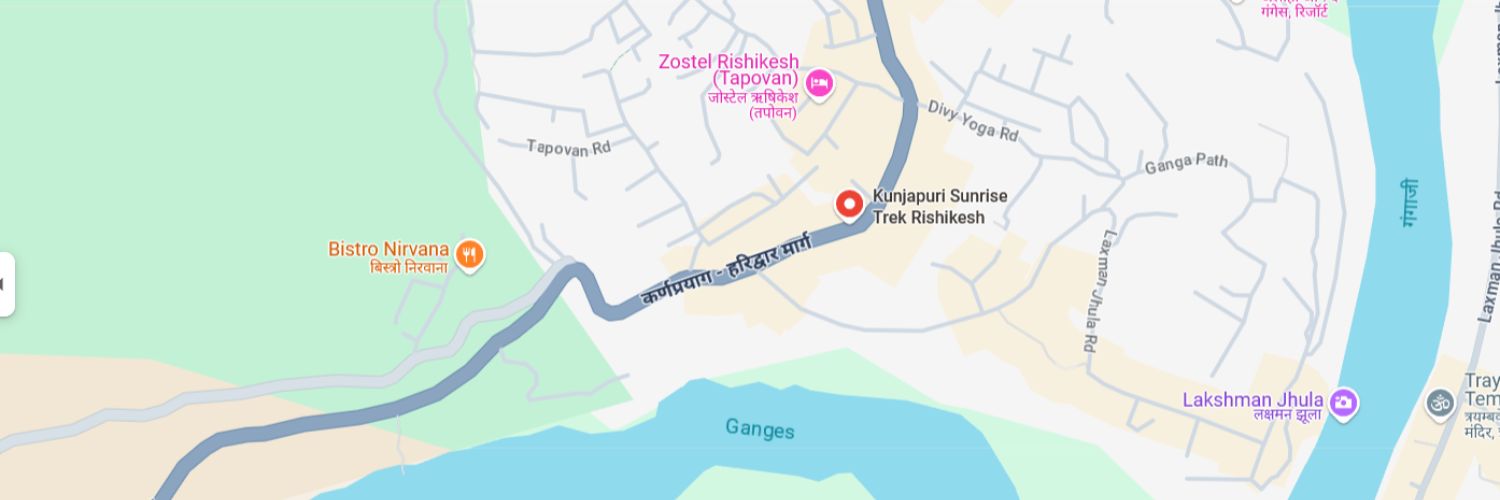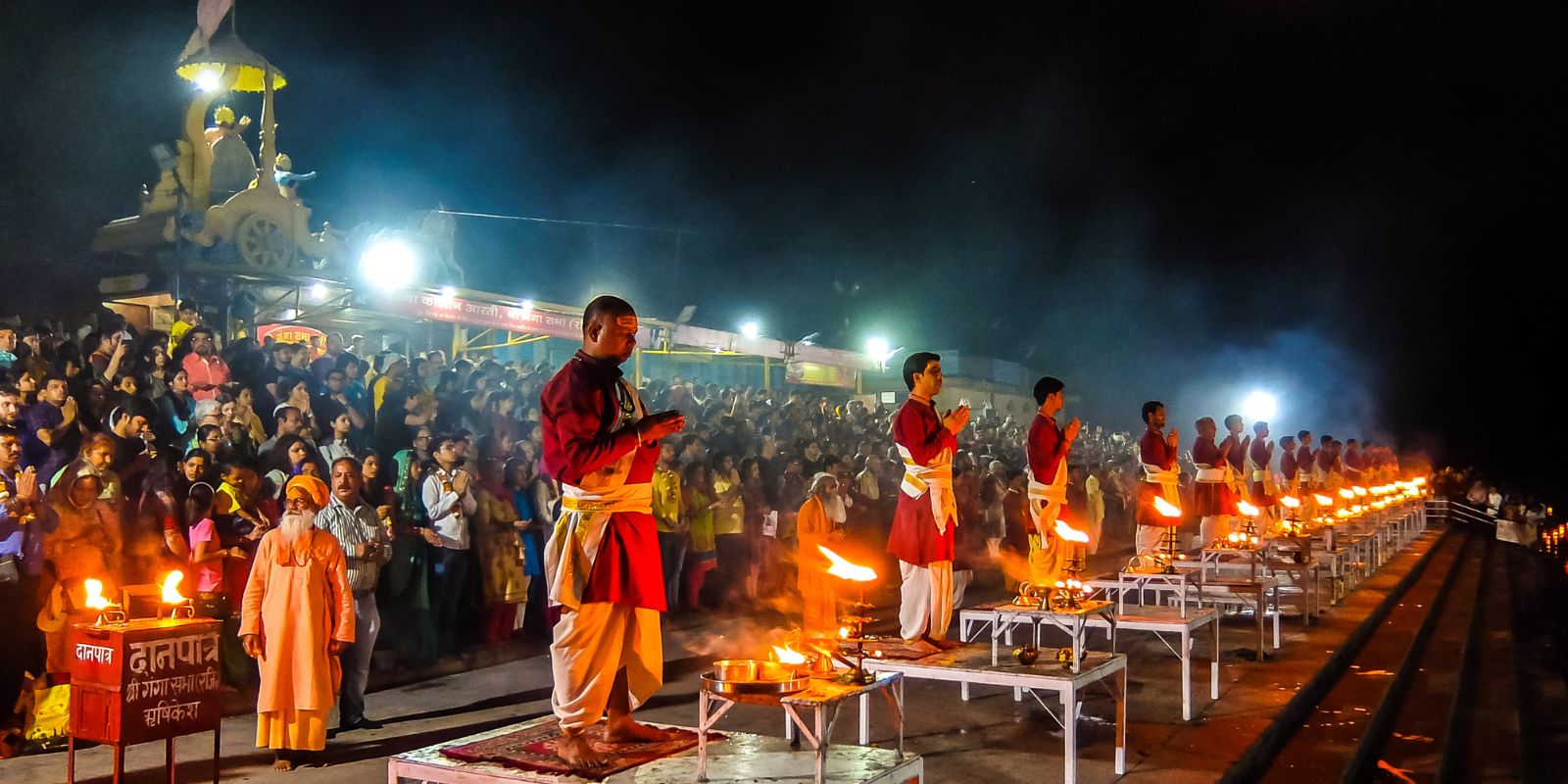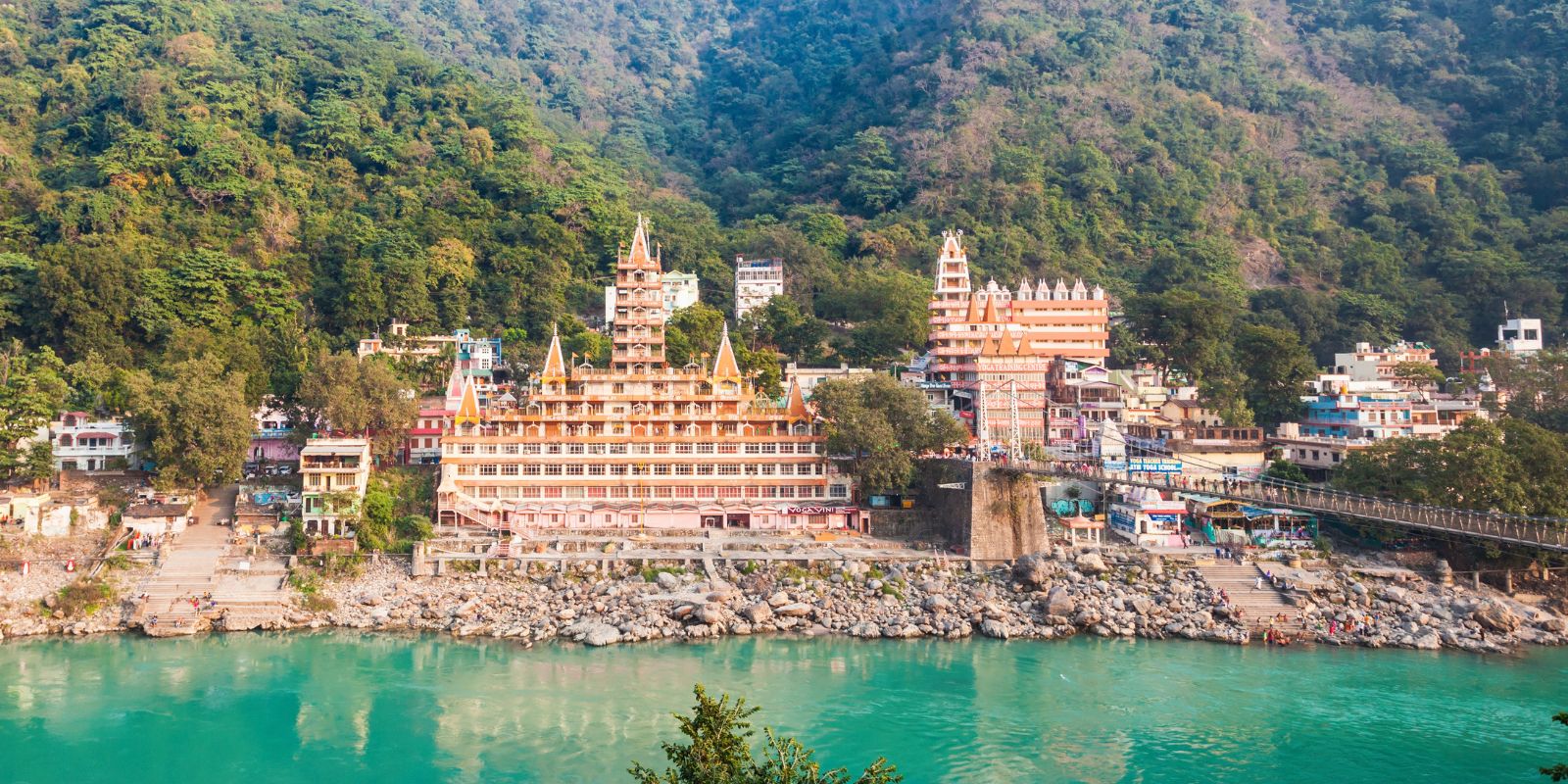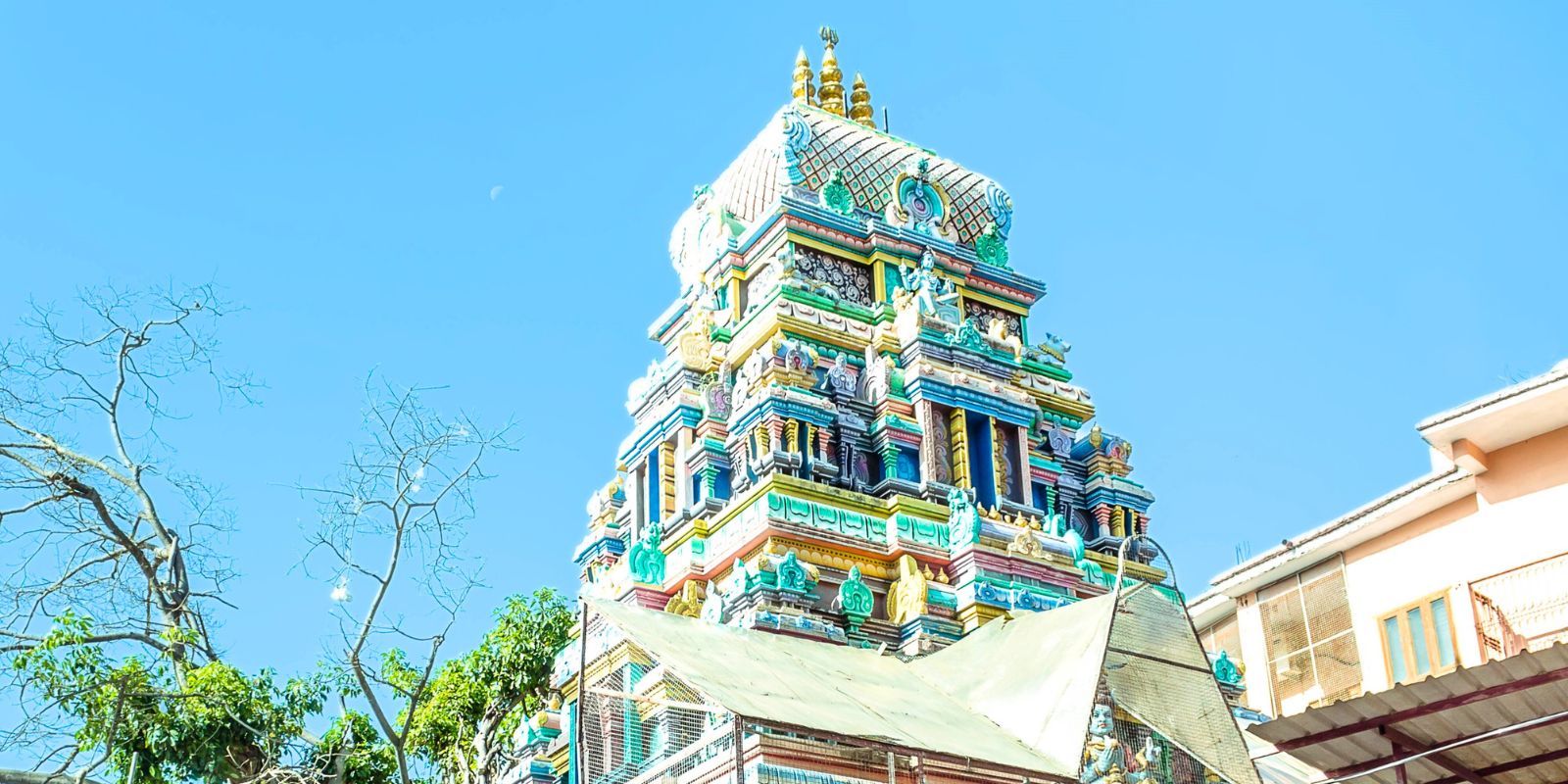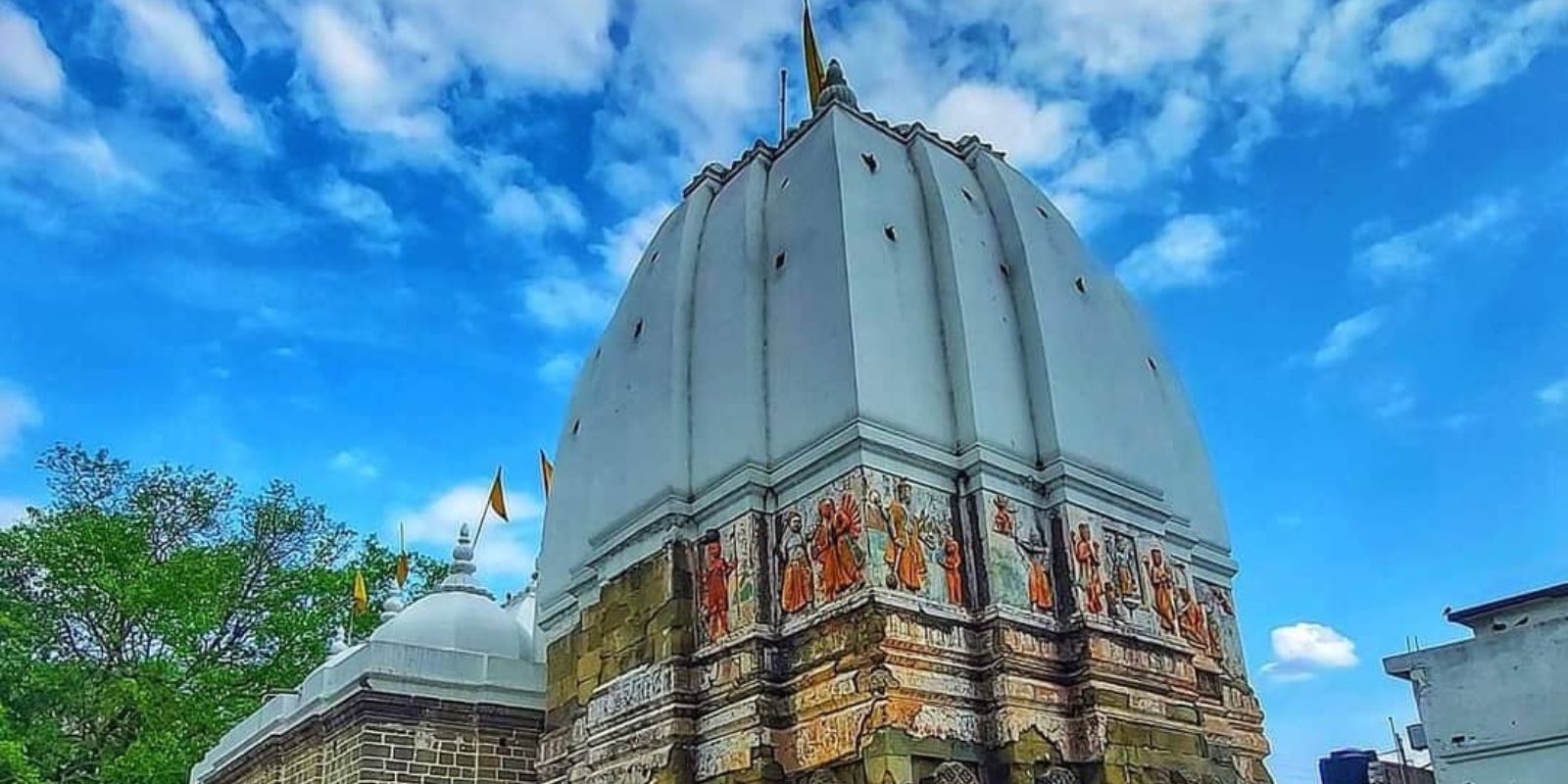Kunjapuri Devi Temple is one of the 52 Shakti Peethas, located about 25 km from Rishikesh. Set atop a 1,650-meter hill, the temple is dedicated to Goddess Sati. Pilgrims ascend the steps not just to seek blessings but also to witness some of the most breathtaking sunrises in the region. It’s a confluence of spiritual intensity and Himalayan serenity.
Noteworthy Attractions
Shakti Shrine of Kunjapuri
Believed to mark the spot where the chest of Sati fell, the temple radiates fierce feminine energy and protection.
Sunrise Viewpoint
The temple’s eastern-facing platform offers panoramic sunrise views over the Ganga valley and snowy peaks of Chaukhamba and Bandarpoonch
Mountain Meditation Spot
The serene hilltop location makes it a favorite for yogis and meditators seeking solitude and energetic alignment.
History & Culture
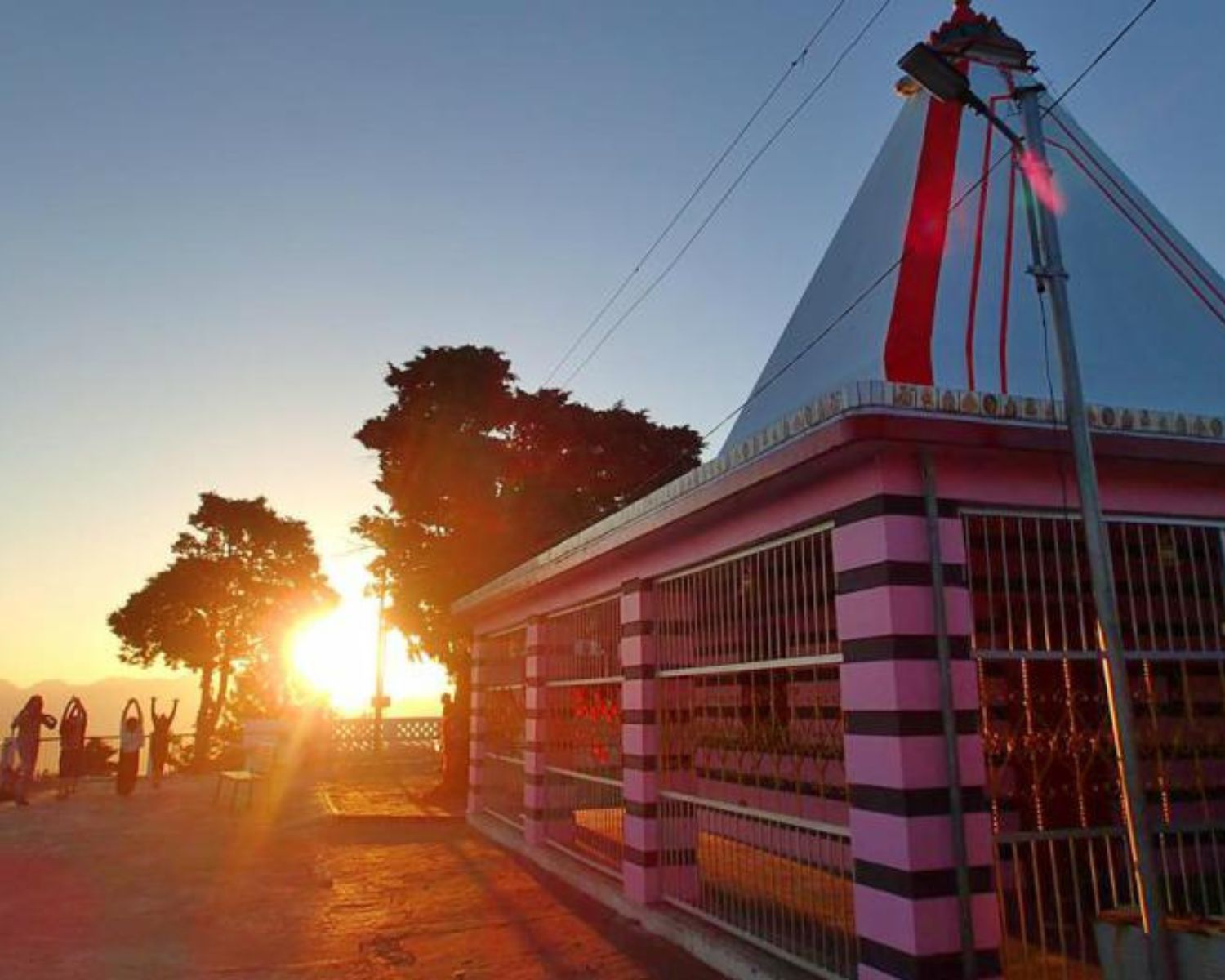
Origins & Legacy
The temple is part of the sacred Shakti Peetha network where parts of Goddess Sati’s body are said to have fallen. Mythologically, Kunjapuri marks the place where her chest landed after Shiva’s cosmic dance. Over centuries, it has been a powerful site of Shakti worship and pilgrimage for local hill communities and wandering sages alike.

Sacred Importance
Kunjapuri is revered as a divine embodiment of Shakti cosmic feminine energy. Devotees visit to gain strength, healing, and clarity. Navratri is the most significant festival, drawing pilgrims and seekers in large numbers for nine nights of spiritual celebration. The temple is also part of the “Tri Devi Darshan” yatra, along with Chandrabadni and Surkanda Devi.

Rituals & Traditions
- Daily aarti offered at dawn and dusk with bells and conches.
- Offering red flowers, coconuts, and kumkum to the goddess.
- Local women tie threads on temple railings for blessings.
- Special prayers on Tuesdays and during Navratri.
- Trekking barefoot as an act of devotion by many pilgrims.
Practical Guidance
When to Go
Best visited between October and March for clear skies and cool temperatures. Navratri in spring and autumn draws the most pilgrims and spiritual energy.
Respect & Reverence
Guidelines
- Dress modestly, covering shoulders and legs.
- Maintain silence during aarti.
- Shoes must be removed before entry.
Restrictions
- Littering and loud behavior are strictly discouraged.
- Alcohol, tobacco, and non-vegetarian items are not permitted within temple premises.
Arriving Here
By Air
Jolly Grant Airport (30 km away) is the nearest airport. Taxis to Hindola Khal or Tapovan are easily available.
By Rail
Rishikesh Railway Station is the nearest major station. From there, taxis or shared jeeps can take you to the base village.
By Road
From Rishikesh, it’s a 25 km uphill drive via Narendra Nagar. Roads are motorable but winding—ideal for early morning departures.
Immersive Experiences
Spiritual Practices
Chant mantras at sunrise as the Himalayan peaks blush pink an experience of awe and reverence beyond words.
Local Rituals
Observe traditional offerings from local villagers goat bells, red threads, and deepa lighting passed down generations.
Closing Reflection
Triveni Ghat transcends a mere riverside stop—its nightly aarti and ceaseless devotion embody Rishikesh’s timeless soul. Whether seeking solace or witnessing a radiant cultural display, each visit seals a heartfelt connection between pilgrim, river, and the ever-flowing spirit of India’s sacred traditions.

